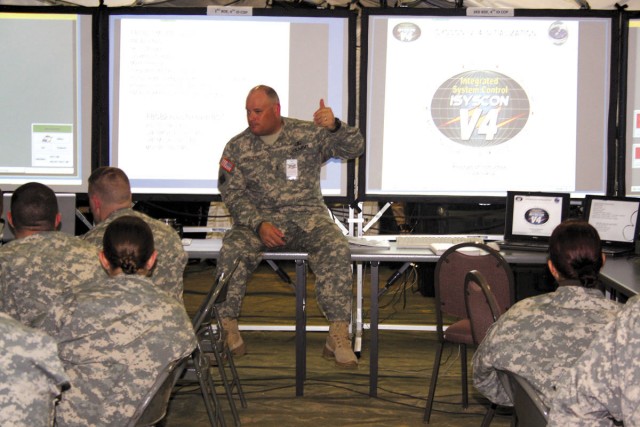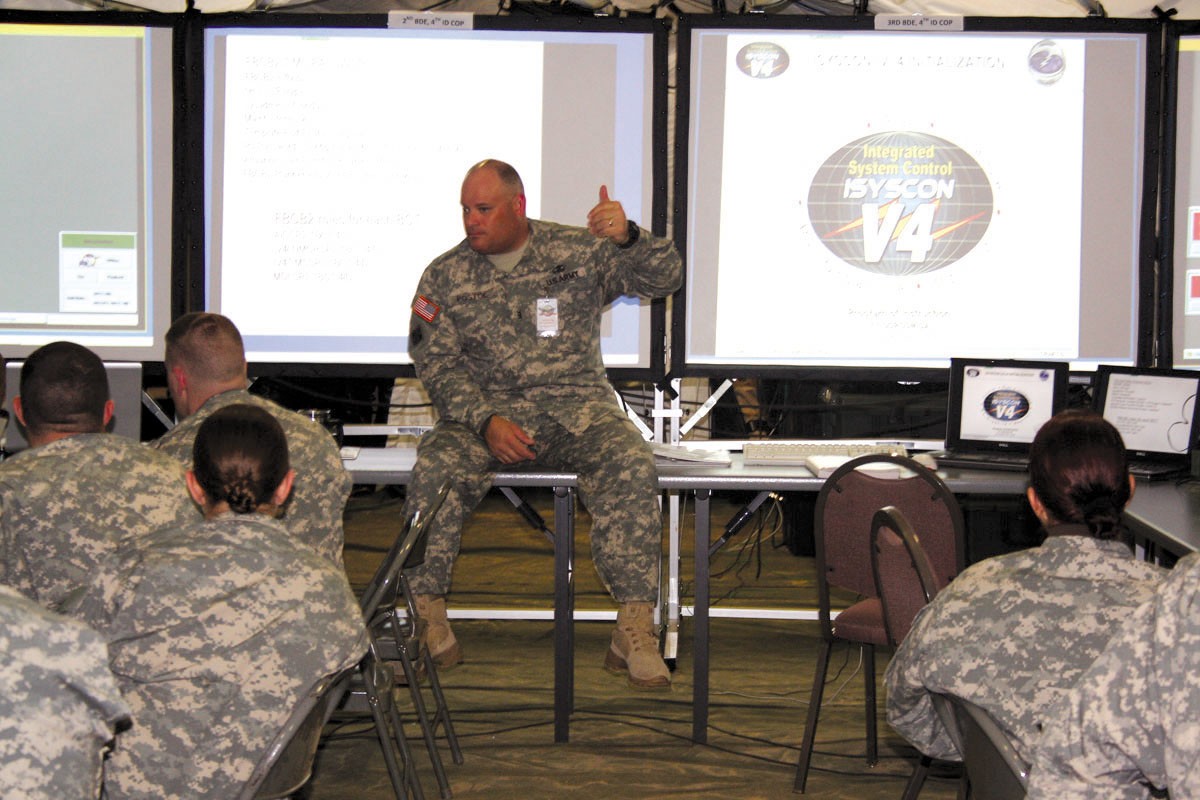FORT GORDON, Ga. -- (March 31, 2009) Despite an unassuming facade Training Area 10 is forging into new territory.
From the outside, it doesn't look like much--just a few tents and old buildings. Dig deeper and it becomes apparent that Training Area 10 on Fort Gordon is special.
Training Area-10 hosts the Army's Network Management course, designed to provide training for the 21st century Soldier.
"The instruction is relevant to the times and will hopefully save a few more lives," said Sgt. 1st Class Michael Evans, Network Management instructor.
"We teach Soldiers how to set up, use and manage the latest computer technology available, allowing them to monitor events on the front lines in 'real-time,' providing for a more controlled mission environment."
The course, attended primarily by warrant and noncommissioned officers who serve as the first line leaders in the field, runs approximately two weeks and is an all inclusive training environment.
Sgt. 1st Class Terry King, Network Management instructor said, "This is the last course the NCO's and warrant officers get before leaving for their duty stations. It's a culmination of all their training. It touches on everything they've learned.
"The Army is going digital. They're getting away from paper maps and hard copies and making everything electronic. The course prepares our leaders for this," he said.
King said the technology taught in the course also allows for better teleconferencing.
"This means commanders can hold briefings, planning sessions and meetings without ever risking travelling from their Forward Operating Bases. It really is war fighting from a distance," he said.
"The updates in communication and Signal technology means leadership can communicate with each other from the safety of their FOBs, removing a potential threat to their safety."
Of course, those same technological advances can provide difficulty as well. Soldiers potentially run the risk of being trained on systems that could be out of date by the time they reach the field.
Keeping up with the technology is the most difficult part," Evans said. "That's why we adapt and implement new equipment and techniques almost every day."
For the students, the amount of information and training they receive in such a short period can be nerve-racking at first.
"It's a little overwhelming, but it comes together in the end," said student Staff Sgt. Hendrik Zandbergen. "Also, it's important to remember you can't get this kind of training anywhere else. It's thorough and all encompassing."
Evans agrees with that assessment.
"For the Army, there's no better training on systems. And for anyone who moves to the civilian sector, it helps them land those in demand careers. This training can help provide a better future whether Soldier or civilian," he said.


Social Sharing